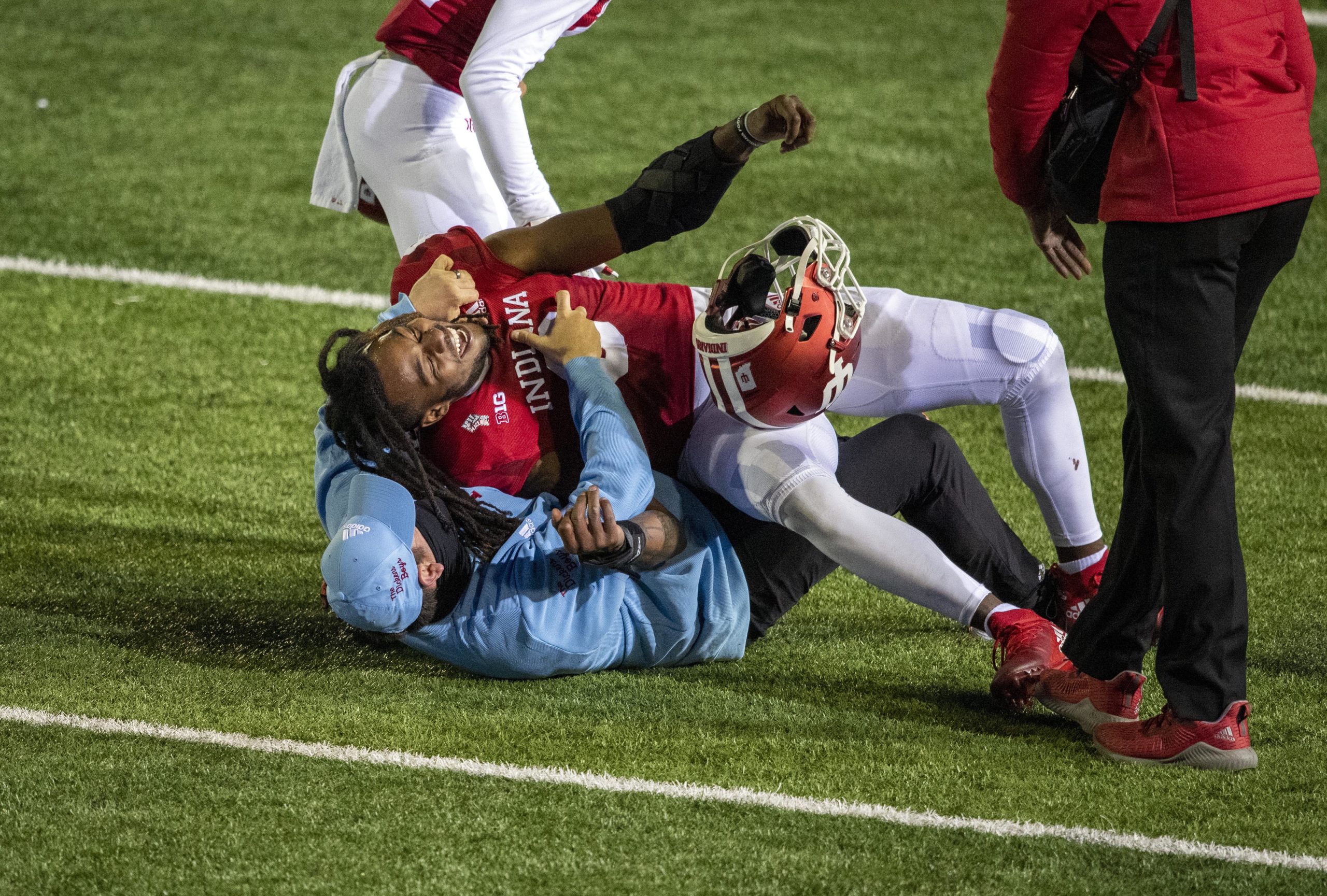Ad Disclosure

By the early ’90s, Bill Mallory had the Hoosiers rolling, as they were a near-constant postseason participant — back in the years when there weren’t almost 40 bowl games — that had IU fans pumped.
In ’93, Mallory’s 10th season and far removed from an 0-11 Big Ten finish in his first, the Hoosiers got hot early, winning 7 of their first 8 games, the only slipup being a home loss to No. 23 Wisconsin in late September. And they rose as high as No. 17 in the country. IU faltered down the stretch, losing road games at No. 19 Penn State and No. 5 Ohio State, beating Purdue for the Bucket, then losing to No. 22 Virginia Tech in the Dec. 31 Independence Bowl. Still, the Hoosiers finished with 8 wins and a fourth-place finish in the Big Ten. It was a season IU fans could celebrate.
But that was the peak. Mallory was gone three years later, after back-to-back sub-.500 finishes, and for decades IU failed to replicate the hype.
Sure, there were moments. All-America quarterback Antwaan Randle-El brought electricity to Memorial Stadium and Coach Terry Hoeppner brought promise and optimism. After Hoeppner’s death, Bill Lynch took the Hoosiers to a bowl game the next year in 2007, but it was the first since ’93. And Kevin Wilson guided IU to back-to-back bowls in ’15 and ’16, but those were sub-.500 years ultimately — bowl losses knocked the Hoosiers to 6-7 — and few fully embraced the abrasive head coach.
All that makes today, in the aftermath of the Hoosiers’ dramatic come-from-the-brink victory over Penn State, all the more welcomed. Voters took notice of IU’s win, ranking the Hoosiers No. 17 in the AP Poll and No. 19 in the coaches, their highest since ’93. Indiana, and its fanbase, needed the kind of marquee victory that could provide the springboard for something even greater.
Is that now?
Well, only time can tell.
The Hoosiers did a lot right Saturday, particularly after Penn State’s win probability rose to 99.9%. Then, coach Tom Allen made risky, yet calculated, moves, allowing a touchdown to the Nittany Lions — he knew that trailing by 8 with 1:42 left in regulation was better than trailing by 8 with less than 30 seconds left, or than losing by 1 at the buzzer — then going for 2 in the first overtime, choosing to win or lose right there.
Indiana took advantage of Nittany Lions’ mistakes in clock management and in turnovers. Stevie Scott III’s touchdown runs came within 90 seconds in the second quarter, after Big Ten co-Defensive Player of the Week Jamar Johnson picked off a pass to set up the second score. It was the kind of early confidence-builder that the underdog Hoosiers needed.
But IU was far from perfect. The Hoosiers tallied only 212 yards of offense, averaging only 3.4 per snap, and converted only 4 of 12 third-down attempts. Michael Penix Jr. was inconsistent at quarterback, missing wildly on downfield passes, but making plays otherwise. His reach for the pylon on the overtime 2-point conversion will be talked about around Bloomington — and debated elsewhere — for years and years to come.
Penix, though, must be better, as must new offensive coordinator Nick Sheridan. Scott had 20 of IU’s 21 carries, leaving only one for backup Sampson James; All-Big Ten wide receiver Whop Philyor had 5 receptions, but for only 36 yards; tight end Peyton Hendershot had only 2 catches.
They’ll need to improve. And maybe quickly.
A road trip to Rutgers is next, and while that might not ordinarily seem like a big deal, nothing about 2020 is ordinary. And that includes the Scarlet Knights’ winning a Big Ten game Saturday, doing so for the first time since 2017 with their victory at Michigan State.
IU is an early 12-point favorite, a rare instance when it is a double-digit favorite on the road in the Big Ten. But the Hoosiers should be on alert. Saturday’s win over PSU matters, but it matters more if IU validates one win with another.
Then, with Michigan — a team IU hasn’t beaten in 32 years — coming to Bloomington Nov. 7, the hype machine might get turned up to a whole other level.
Kyle Charters, a familiar face at Gold & Black, covers Purdue, Indiana and college basketball for Saturday Tradition.